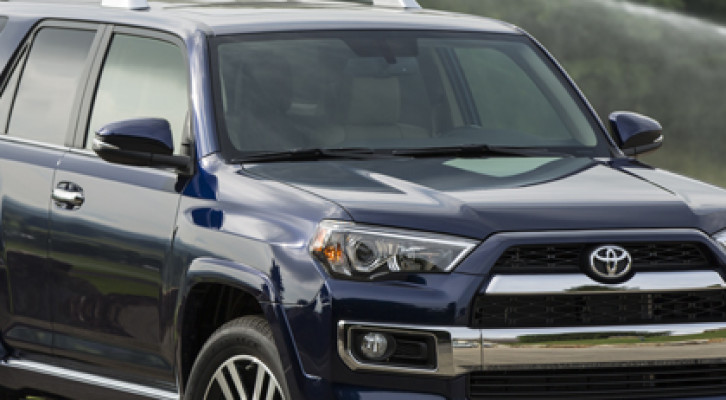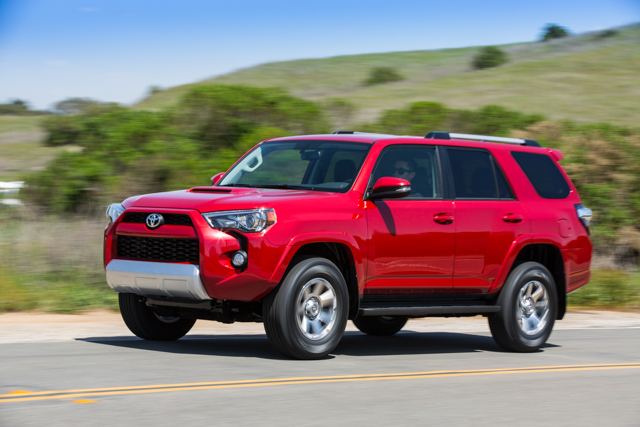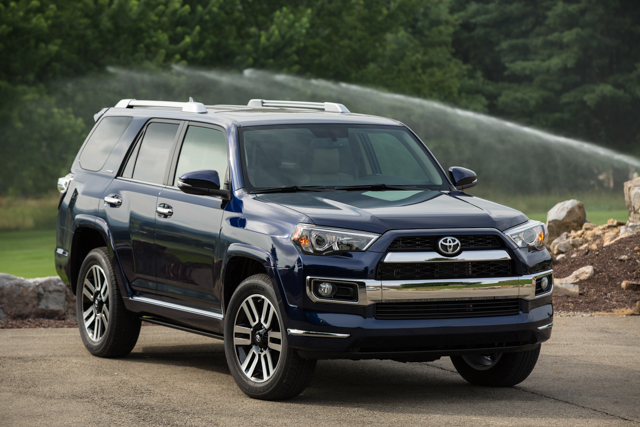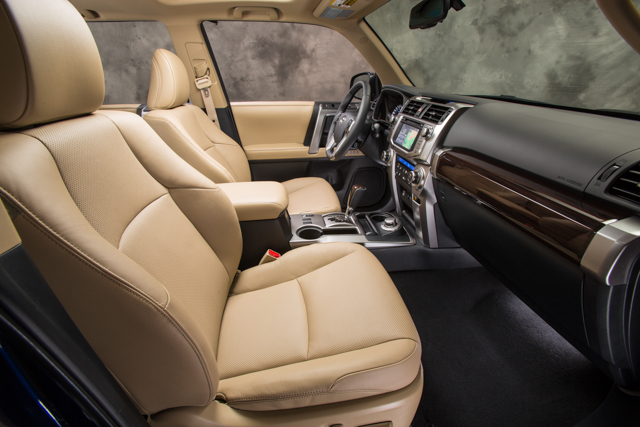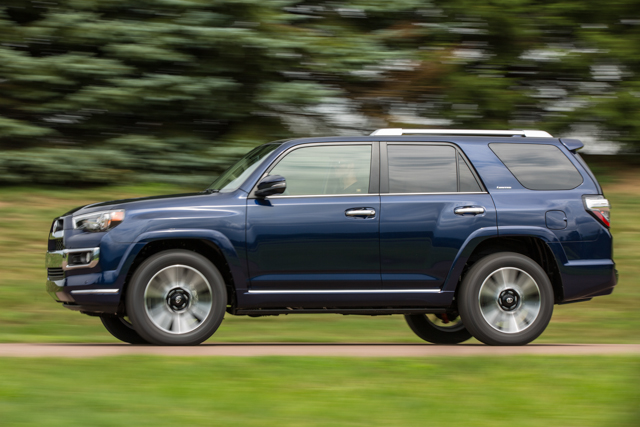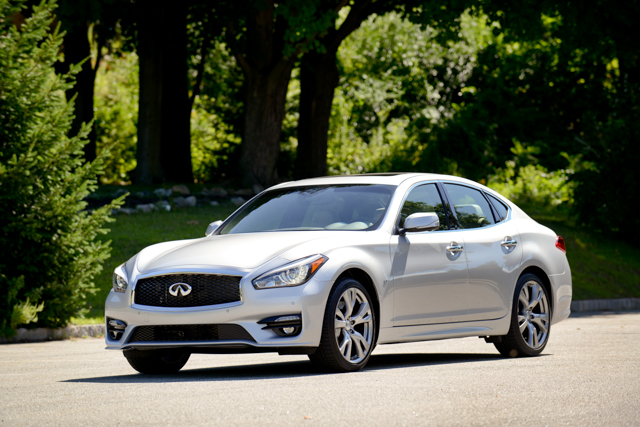It’s widely considered a youthful vehicle, but the Toyota 4Runner’s been around for 30 years. That makes it practically a grizzled veteran in the automotive world. It debuted in 1984 as a tough, body-on-frame SUV based on the Toyota pickup, and it’s grown over the years into … a tough, body-on-frame SUV. The 4Runner is one of the last serious off-roaders, with high ground clearance, good approach and departure angles, and significant capability out in the mucky stuff. Its perennial competitors, such as the Ford Explorer and Nissan Pathfinder, have changed with the times and adopted more carlike unibody construction, with smooth road manners.
The 4Runner remains true to its get-dirty heritage, though. The body still is mounted on a strong frame, and the look is unabashedly rugged, not smoothed by wind tunnels. The 4Runner even has models that are aimed directly at the folks who plan to take it off-road; only Jeep offers a similar off-road specific model.
This SUV’s always had a high-stepping, high ground clearance stance, and that hasn’t changed much over the years. The 4Runner is tall where the more carlike sport-utes are low. The body features broad, tall shoulders and lights mounted high up on the body, where they’re less likely to get damaged by the terrain. It’s got a classic wagon silhouette, with a long, square hood and a generous greenhouse. The grille and bumpers have been slightly revised for 2014, so there’s more distinction between the various models; the luxurious 4Runner Limited features a more substantial front fascia, while the off-roading 4Runner Trail gets a hood scoop and sparser trim. Projector head lamps and LED taillights help to modernize the look, and the 4Runner features a range of new wheels. Look closely and you’ll see longer mud guards and aerodynamic vortex generators on the side mirrors. A trailer hitch with a 4,700-pound capacity is standard.
For 2014, the 4Runner’s interior has been significantly upgraded. The seats still are closer to the floor than you’d expect for an SUV, but overall ride quality and comfort have been improved. Toyota’s blocky, silver-accented truck interior design provides the 4Runner with an easy-to-use controls and a handsome look. The 4Runner still drives like a truck, but it’s quieter. A new audio system features Toyota’s next-generation Entune system, with smartphone app connectivity and three years of complimentary access to apps like Bing, IHeartRadio, Pandora, MovieTickets.com and others. The interior materials are rugged and easy to clean on the 4Runner Trail, and the dash features technical-looking dark accents. Toyota also leaves off some of the weight-adding power options, to help strip the Trail down for action. Moving up to the Limited, you’ll get more chrome, Redwood leather and wood accents. Three-row seating is available, as is a backup camera, navigation and satellite radio.
All 4Runners come with a 270-horsepower 4.0 liter V-6 engine. This sturdy powerplant features variable valve timing for smooth power delivery. Fuel economy is about what you’d expect for an SUV — better than it used to be, but not quite good. Out on the road, the 4Runner is confident and powerful on pavement, with plenty of power to spare. Get it into the muck, and the two-speed four-wheel drive system churns confidently through unpleasant terrain. Though it looks more genteel than it has in the past, the 4Runner remains an extremely tough and easy-to-drive vehicle off-road. It will also tow up to 5,000 pounds, and features a standard integrated receiver hitch and trailer wiring.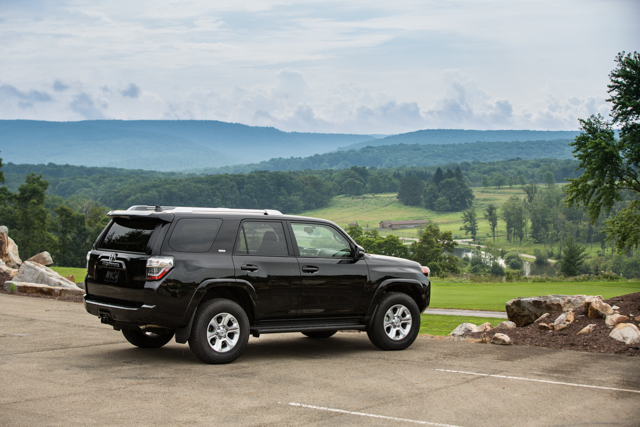
On-road performance is aided by a double-wishbone front suspension that provides precise steering control. A four-link rear at the rear provides smooth riding and minimal axle hop. Toyota has dramatically reduced the levels of head-toss and pitch, especially Limited models which use the X-REAS cross-linked suspension. A center control absorber enables the 4Runner to adjust damping force on rough roads. The powertrain’s confidence is matched by a sure-footed suspension. Trailer sway control is standard, as is A-TRAC traction control. In the off-road focused Trail grade, the Kinetic Dynamic Suspension System is available, enabling the 4Runner to disconnect the stabilizer bars for improved axle travel and wheel articulation. Crawl Control is standard on the Trail grade. The 4Runner’s approach and departure angles are impressive, at 33 degrees and 26 degrees, respectively, and it’ll tackle over 27 inches of water without hesitation. A hill-start and hill-descent control also are available.
With the ever-present evolution of the SUV market, the 4Runner remains deceptively true to its roots. It’s a modern, tough-looking vehicle, but still very much a truck. 4Runner pricing starts at $32,820.

